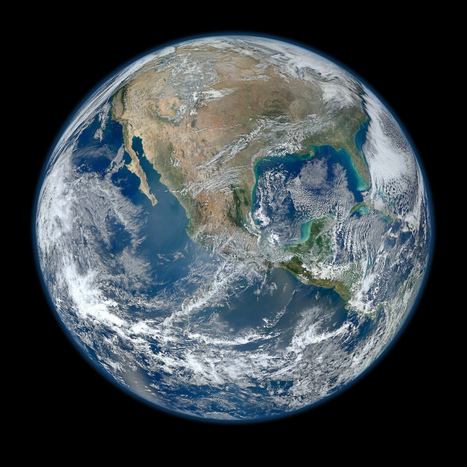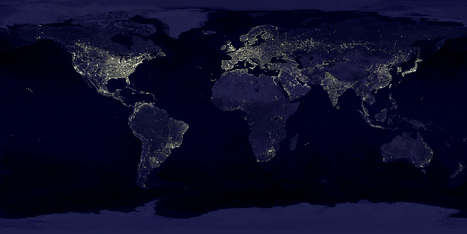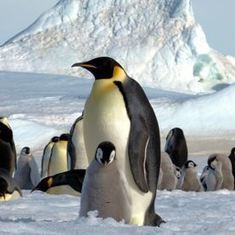NASA's Visible Earth catalog of NASA images and animations of our home planet...
This classic image is full of classroom applications. The first impulse of most students is to note that this image will show us where people live, where the cities are or some other comment that speaks to the magnitude of the population in the white areas. Let them analyze this for more time, and they'll notice that population isn't the whole story of this image. A place like India shines, but less brightly than the eastern part of the United States. I like to point out that South Korea appears to be an island (because North Korea is literally blacked out). Politics, development, affluence and population information are all embedded in this image. As with all maps, the more information you have about the place in question (in this case, Earth), the more meaningful information you can extract out of the map.
Tags: remote sensing, worldwide, consumption, poverty, population, spatial, political, regions.



 Your new post is loading...
Your new post is loading...










